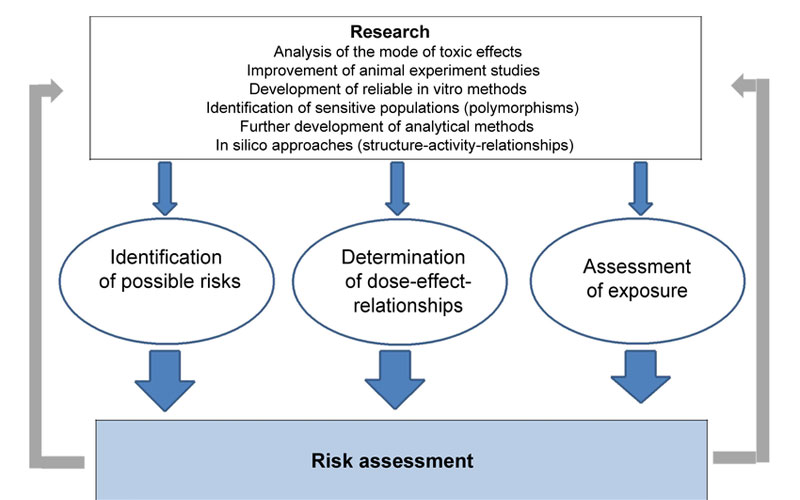Navigating the Waters of Toxicological Risk Management London
Toxicological risk management London is a crucial aspect that encompasses the assessment, evaluation, and mitigation of risks posed by chemicals and biological agents LTG. As urbanization burgeons and industrialization accelerates, it becomes imperative to ensure public safety and environmental integrity in this vibrant city. This article delves into the multifaceted dimensions of toxicological risk management as practiced in London, exploring its principles, methodologies, challenges, and future directions.
Understanding Toxicological Risk Management

Before diving deeper, it’s valuable to grasp the essence of toxicological risk management. This field blends toxicology—the study of harmful substances—and risk management, which focuses on minimizing exposure and potential harm.
The Foundations of Toxicological Risk Management
The fundamental goal of toxicological risk management is to protect human health and the environment from the adverse effects of chemical exposures. It involves several key components:
- Hazard Identification: First and foremost, identifying potential hazards is essential. This encompasses studying materials in use, their chemical properties, and the circumstances under which they may pose risks.
- Dose-Response Assessment: Next, assessing how various doses of these chemicals affect living organisms is pivotal. Understanding the relationship between dose and response helps in determining acceptable exposure levels.
- Exposure Assessment: Analyzing who is exposed, how much exposure occurs, and through what routes (inhalation, ingestion, dermal contact) is vital in risk management.
- Risk Characterization: Finally, integrating information from previous steps allows for a comprehensive characterization of risks, laying the groundwork for informed decision-making.
Legislative Backdrop in London
Toxicological risk management in London operates within a robust regulatory framework designed to ensure safety. Agencies like the Health and Safety Executive (HSE) and the Environment Agency play crucial roles in enforcing laws and guidelines that govern chemical usage.
Legislation such as Reach (Registration, Evaluation, Authorisation & Restriction of Chemicals) underpins the EU’s approach to chemical safety. Similarly, the Control of Substances Hazardous to Health (COSHH) regulations mandate employers to protect workers from hazardous substances.
The commitment of these organizations underscores London’s proactive stance in managing toxicological risks effectively, ensuring that industries prioritize safety without stifling innovation.
The Role of Stakeholders
Multiple stakeholders engage in toxicological risk management, including government bodies, industry representatives, non-governmental organizations, and the general public. Each plays a distinct role:
- Government Bodies: They legislate, regulate, and enforce compliance with established safety standards.
- Industries: Companies are responsible for conducting assessments, implementing safety measures, and reporting incidents or concerns related to chemical exposures.
- NGOs and Public Advocacy Groups: These entities raise awareness, advocate for stricter regulations, and often hold governments and corporations accountable for maintaining high safety standards.
- The General Public: Public engagement is crucial, as communities must be informed about potential risks in their environments and encouraged to participate in dialogue regarding safety.
Methodologies for Risk Assessment
The methodologies employed in toxicological risk management can significantly impact the efficacy of risk assessments. Various approaches help professionals to understand and mitigate risks associated with toxic substances.
Quantitative Risk Assessment
Quantitative risk assessment provides a numerical estimate of the probability of adverse effects arising from chemical exposures.
Utilizing mathematical models and data analysis, professionals can derive risk estimates that inform decision-making. For example, evaluating the risk of a particular chemical used in manufacturing can involve complex calculations based on established frameworks like the Integrated Risk Information System (IRIS).
However, while quantitative assessments offer precision, they may not always capture the complete picture, particularly concerning vulnerable populations or cumulative risks from multiple sources. Thus, qualitative insights should complement quantitative assessments for richer understanding.
Qualitative Risk Assessment
In contrast, qualitative risk assessment focuses on descriptive evaluations rather than numerical estimates. This method relies heavily on expert judgment and the synthesis of available data to assess risks.
Qualitative assessments can provide context and nuance, especially in cases where numerical data is sparse or uncertain. A thorough qualitative evaluation can shed light on how specific groups—such as children, the elderly, or those with preexisting health conditions—may be disproportionately affected by certain chemicals.
Integrating both quantitative and qualitative assessments yields a comprehensive approach that enhances risk management strategies.
Risk Communication Strategies
Effective communication is paramount in toxicological risk management. Stakeholders must convey risks clearly and compellingly to foster understanding and collaboration.
Implementing transparent communication strategies ensures that the public, industry players, and policymakers are aligned on potential hazards. Educational initiatives, community workshops, and digital platforms can enhance outreach and engagement.
Additionally, employing clear visualizations can help demystify complex scientific data, making it more accessible to non-experts. Risk communication should not merely focus on conveying dangers but also empower individuals with actionable strategies to minimize their exposure.
Challenges in Toxicological Risk Management
Despite advancements, significant challenges persist in toxicological risk management within London and beyond. Addressing these hurdles requires innovative solutions and collaborative efforts.
Emerging Contaminants
One of the pressing challenges facing toxicological risk management today is the emergence of new contaminants from various sources, including pharmaceuticals, personal care products, and microplastics.
These substances are often poorly understood, and traditional risk assessment methodologies may not adequately address their unique properties and potential impacts. Continuous research and adaptive regulatory frameworks are essential for keeping pace with evolving threats.
Furthermore, the presence of these emerging contaminants in water supplies and ecosystems poses risks not only to human health but also to biodiversity. Prioritizing research and monitoring programs can illuminate the pathways of these contaminants and facilitate more effective remediation strategies.
Data Gaps and Uncertainty
Another challenge lies in the availability and quality of data required to conduct robust risk assessments. Many chemicals lack adequate toxicity profiles, leading to uncertainty in risk evaluations.
The absence of empirical data can result in an overreliance on assumptions and proxies, potentially undermining public confidence in risk assessments. Advocating for investment in toxicological research and encouraging industry transparency regarding chemical ingredients can help bridge these gaps.
Moreover, the use of alternative testing methods, such as computational toxicology and high-throughput screening, can expedite data generation and improve the accuracy of assessments.
Balancing Economic Growth and Safety
Striking a balance between economic growth and public safety represents a persistent challenge in toxicological risk management. Industries often argue that stringent regulations may hinder innovation and competitiveness.
Conversely, inadequate regulation can expose communities to undue risks. Policymakers must navigate this tension by fostering a regulatory environment that incentivizes safe practices while encouraging sustainable business models.
Engaging with stakeholders—including businesses, scientists, and community members—in the regulatory process can foster collaborative solutions that align economic interests with safety imperatives.
FAQs
What is toxicological risk management?
Toxicological risk management refers to the systematic process of identifying, assessing, and mitigating risks posed by harmful substances to human health and the environment.
How does toxicological risk management differ from regular risk management?
While regular risk management can pertain to a wide range of risks (financial, operational), toxicological risk management specifically focuses on chemical exposures and their effects on health and ecosystems.
What role does legislation play in toxicological risk management in London?
Legislation serves as a framework for regulating hazardous substances, ensuring compliance, and protecting public health and the environment through various regulatory agencies.
How can emerging contaminants be effectively managed?
Addressing emerging contaminants requires continuous research, monitoring, and adaptable regulatory frameworks that can keep pace with developments in chemistry and toxicology.
Why is risk communication important in toxicological risk management?
Effective risk communication fosters understanding, builds trust among stakeholders, and empowers communities to make informed decisions regarding potential chemical exposures.
Conclusion
Toxicological risk management London is a dynamic and evolving field that demands a multi-faceted approach to safeguard public health and ecological integrity. As we navigate the complexities of modern life, the interplay between science, policy, and community engagement will shape the future of toxicological risk management. Embracing innovative assessment methodologies, addressing challenges head-on, and fostering collaboration among stakeholders remains crucial for creating safer environments for all. In this quest, London stands at the forefront, setting an example of proactive and responsible risk management strategies that could inspire cities worldwide.
